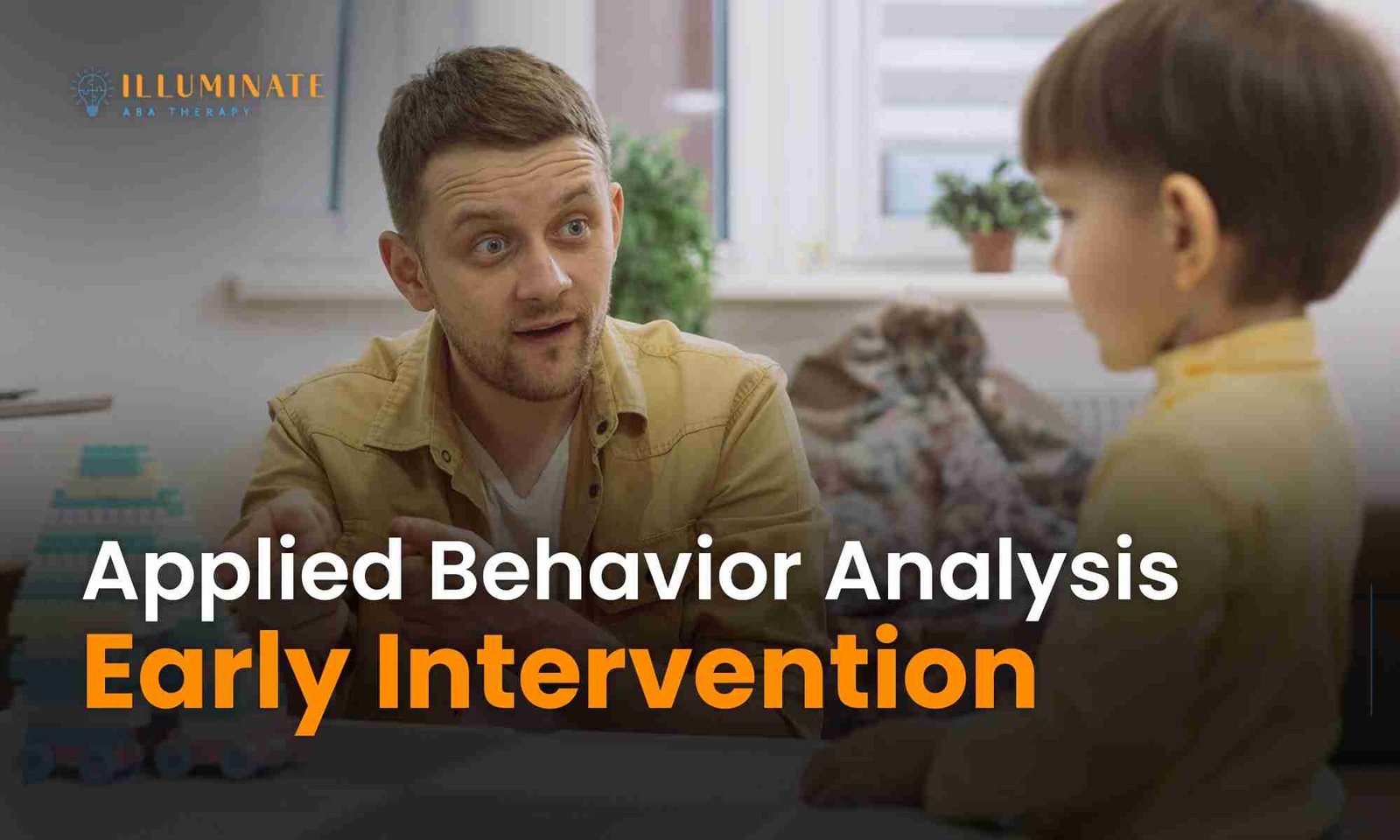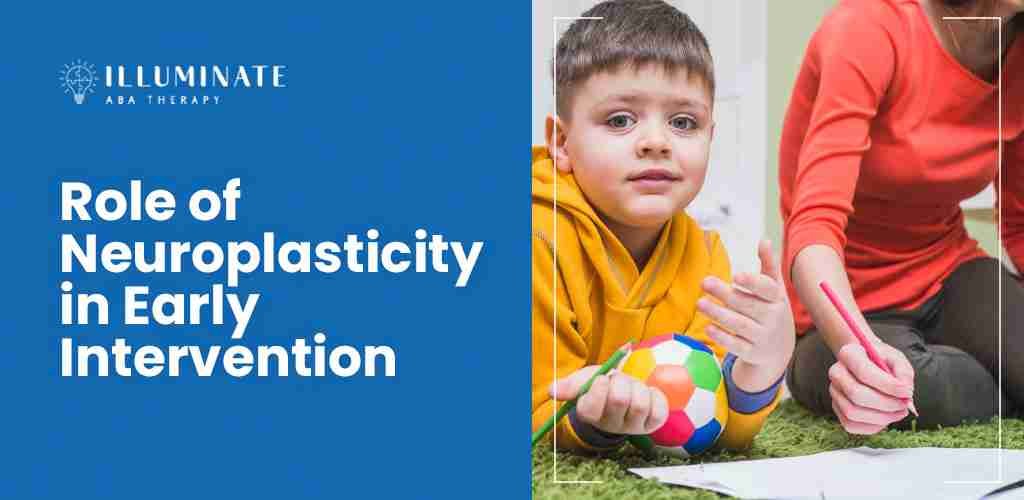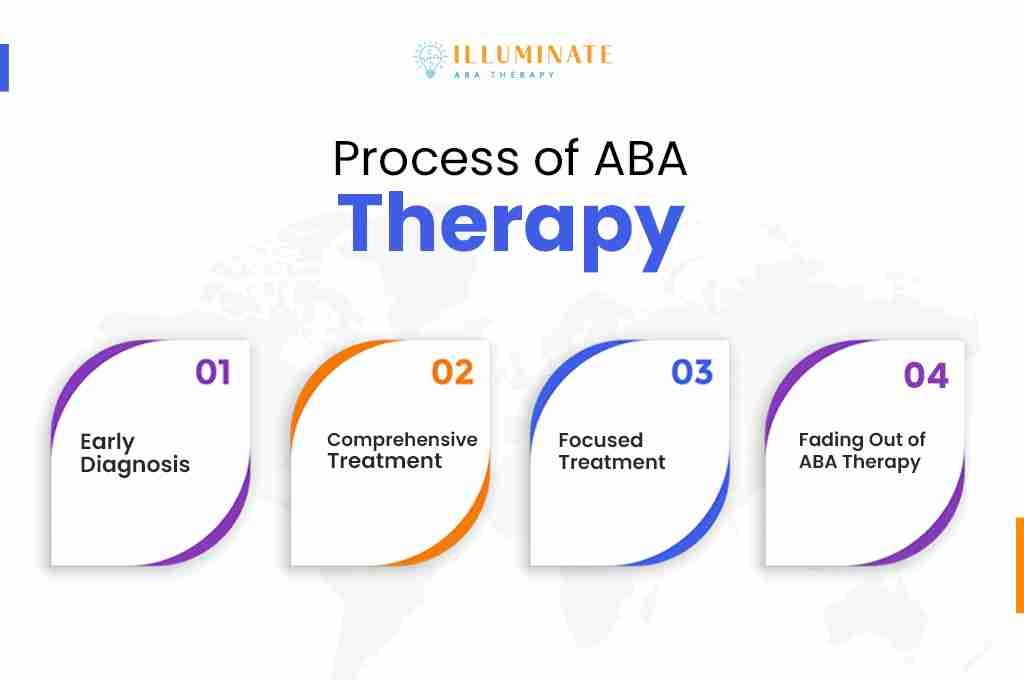
Applied Behavior Analysis Early Intervention — Illuminate ABA
As per the data reported by the Centers for Disease Control and Prevention, in the US, every 1 in 36 children have autism, and as time passes, the figure is experiencing an increase. Whether we have become better at diagnosing autism spectrum disorder or the number of autistic children is actually increasing, one thing that is crucial is “early intervention.”
By now, people are well aware that there is no cure for autism, but interventions like applied behavioral analysis have shown significant positive results in helping autistic children reach their full potential. How does applied behavior analysis (ABA) early intervention work? Read this article to know more about this.
Understanding ASD, Early Intervention, and Their Relationship
Before heading into what early intervention is and why it is crucial, first, understand what autism spectrum disorder actually is. It is a neurotypical disorder that is caused by a mutation in the genome. Several factors, such as advanced parental age and maternal obesity, contribute to the development of autism in children.
If a child is experiencing developmental delays or is diagnosed with ASD, a range of targeted services and support is provided that helps them in managing the symptoms. This is what early intervention is. It focuses on addressing developmental challenges as early as possible when the brain is in developmental stages to reduce the signs as much as possible.
So, as the parents are now well aware, they can easily identify the unusual behaviors that lead to the diagnosis of autism. Apart from speech delay and physical signs, there are multiple social or behavioral symptoms that need immediate attention, and parents must visit the specialist and seek early intervention.
Some of the behavioral and social symptoms are:
- Difficulty in maintaining eye contact
- Lack of response to smiling
- Rock, spins, flaps hands
- Rigid in routine transitions
- Overly sensitive
Role of Neuroplasticity in Early Intervention

Neuroplasticity is the brain’s ability to change and adapt according to learning, experience, and environmental factors. You can understand it as the brain forms new neural connections and reorganizes itself when experiencing something routine.
As per the studies, in the first 2 to 3 years of a child’s life, neuroplasticity is the most active, and the brain is more likely to reorganize. This reflects that during the early years of childhood, the brain’s capacity to form new connections is at its peak.
This is why early interventions are crucial for autistic children, as they leave the most lasting developmental effects, and the child is more likely to learn new skills and abilities.
How Does ABA Therapy Support Early Intervention?
Applied behavioral analysis is one of the most effective therapies for understanding the behaviors of autistic people. From understanding the triggers of the behaviors to handling the consequences, ABA therapy tends to encourage positive behaviors and reduce negative ones.
ABA and Neuroplasticity
The approach of ABA therapy perfectly aligns with early interventions because of its alignment with the principles of neuroplasticity. ABA therapy involves the strategies and methods that help children with autism develop new neural connections in the brain.
As these neural connections develop, children can learn essential skills, such as communication skills, social interaction, and adaptive behaviors, more easily than they would when seeking therapy at a late age. The repetitive nature of ABA therapy strengthens these neural connections and helps the children generalize and retain positive behaviors.
Process of ABA Therapy

The process of ABA therapy comprises four steps:
- Early diagnosis
The process starts with early diagnosis of the autism spectrum disorder (ASD), ideally by the age of 2. Early detection helps in starting ABA therapy in a timely manner and maximizes neuroplasticity, as this age is one of the most critical developmental windows.
- Comprehensive treatment
Upon diagnosis, the ABA therapist starts with comprehensive treatment. This means that the therapist focuses on a wide range of skills and behaviors, such as communication skills, academics, social interaction, and self-care. In this stage, the focus is to make the child better at all the areas that are lacking.
- Focused treatment
When the therapist notices improvement in the second stage, the ABA therapy enters in the third stage. In this step, the spectrum transitions from broad to narrow, and some specific behaviors are targeted where the child needs further development.
- Fading out of ABA therapy
The ultimate goal of ABA therapy is to make the child able to live their life without any support and interact with people effectively. As the child with ASD honed the skills and practiced them multiple times without any support, the frequency and intensity of ABA therapy decreased. The last step ensures that the child can easily transition into more typical environments and practice the learned skills effectively in school and social gatherings.
Benefits of Early Intervention ABA Therapy

- Development of positive behaviors
Early intervention ABA therapy helps in developing positive behaviors by taking advantage of high neuroplasticity during childhood. The therapist focuses on key developmental areas such as improving communication skills and learning adaptive behaviors. The repetitive practices lead to lasting positive behaviors that serve as a foundation for future learning and development.
- Reduced negative behaviors
Autistic children are more likely to engage in self-harm activities and disruptive actions that need to be addressed immediately. At early ages, when neuroplasticity is at its peak, the ABA therapist implements practices that modify or replace these behaviors before they become a habit.
An ABA therapist identifies the triggers of the negative behaviors. Based on those triggers and functional behaviors, the ABA therapist teaches the alternatives and more appropriate behaviors that significantly reduce the negative behaviors.
- Improved communication and social skills
Improvement in communication and social skills is one of the most important benefits of early intervention in ABA therapy. The autistic children struggle with understanding and using the language and interpreting the behaviors.
The ABA therapy focuses on these areas and breaks the complex tasks into simpler ones. With continuous reinforcement at an early age, children easily learn how to express their needs, understand others, and participate in activities.
Conclusion
So, instead of delaying the interventions, paying attention to the alarming signs in a timely manner can help your child live a better life.
Learn About: Autism Acceptance vs Awareness


Leave a Reply
You must be logged in to post a comment.